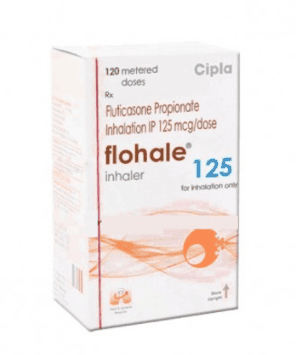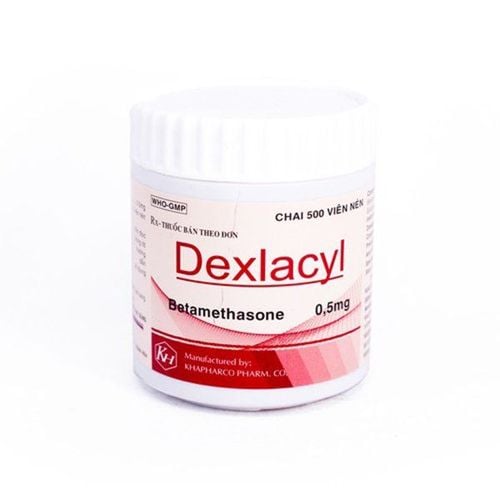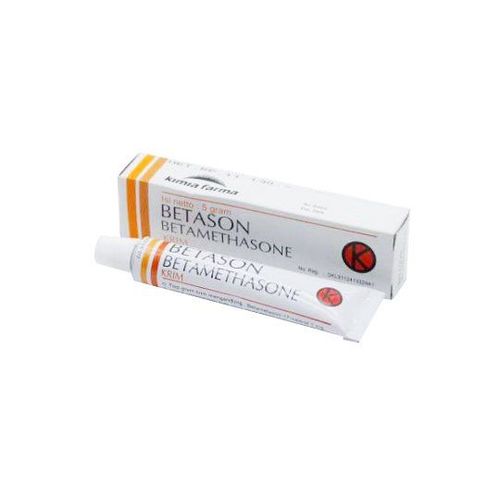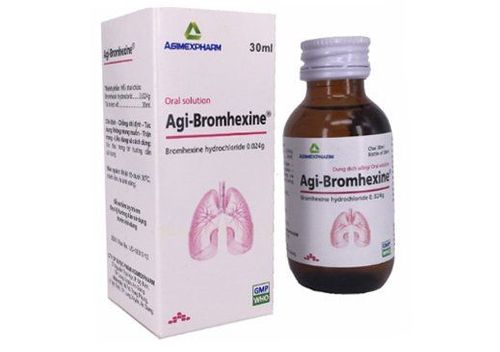This is an automatically translated article.
Celestone drug is used in the treatment of rheumatism, rheumatism, asthma,... So how to use Celestone? What precautions should be taken when using this drug? Let's find out the necessary information about Celestone drug through the article below.
1. What is Celestone?
Drug name: Celestone
Ingredients: Betamethasone 0.5 mg.
Drug group: Anti-inflammatory drugs.
Dosage form: tablets.
Manufacturer: PT Schering Plow Indonesia Tbk - Indonesia.
Packing: Each box of Celestone contains 15 blisters, each blister contains 10 tablets.
2. Uses of Celestone
2.1 Effect of Celestone Drug Effects of Betamethasone:
Betamethasone is a derivative of Prednisolone, which is a corcoticoid with strong anti-inflammatory effects. Betamethasone is well absorbed after oral administration, has a large plasma protein binding rate, Betamethasone is extensively metabolised in the liver and eliminated mainly in the urine. Betamethasone is indicated in the treatment of bone and joint diseases, respiratory diseases such as allergic rhinitis, on the skin such as allergies,... Treatment of hormonal disorders, musculoskeletal disorders, hematopoietic disorders, ... 2.2 Indications of Celestone Drug Celestone is used:
Treatment and prevention of acute rheumatic fever, ankylosing spondylitis, synovitis,... Treatment of asthma, Sarcoidose disease, Loeffler syndrome, beryllium poisoning,... Treatment and prevention of Pemphigus, dermatitis, psoriasis, eczema,...
3. Dosage - How to use Celestone
Dosage:
Treatment dosage for adults: Take 0.25mg - 8mg/day. Dosage for children: Take 17.5-200 mcg/kg body weight/day. Dosage for treatment of patients with rheumatoid arthritis: Oral 1 - 2.5 mg / day, treatment for 4 - 7 days. Dosage for asthma patients: Take 3.5 - 4.5 mg/day, treat for 1-2 days. How to use:
Celestone is made in tablet form, so patients use it orally. Take the drug with about 30 - 50 ml of water, take the drug after meals.
Note: Patients need to carefully read the instructions for use before use and follow the instructions of the doctor. Patients should not arbitrarily break or crush the tablet because it may reduce the quality of the drug and its absorption in the body.
4. Overdose and handling
Symptoms:
Acute overdose of glucocorticoids (including betamethasone) does not lead to a critical condition. Except at extremely high doses, a few days of glucocorticoid overdose is unlikely to cause harmful effects except in cases of specific contraindications, such as in patients with diabetes, glaucoma or peptic ulcer. , or patients being treated with digitaline, coumarin-type anticoagulants, or potassium-depleting diuretics.
Treatment:
In case of acute overdose, immediate treatment should be given by inducing vomiting or gastric lavage. On the other hand, appropriate treatment should be given for complications due to the metabolic effects of corticosteroids, the toxic effects of the underlying disease or comorbidities, or the consequences of drug interactions.
5. Side effects of the drug Celestone
Patients may experience the following side effects:
On circulation and metabolism: Heart failure, potassium loss, increased blood pressure. On skeletal muscle: muscle weakness, loss of muscle weight, osteoporosis. On the nerves: Convulsions, headache, dizziness,... On the skin: slow wound healing, erythema, profuse sweating. When experiencing symptoms that are considered side effects, patients should stop using the drug and consult a doctor or pharmacist for advice for appropriate treatment.
6. Drug interactions
In the process of using the drug, there may be competition or interaction between Celestone with food or other drugs and supplements such as:
Anti-epileptic drugs Phenobarbital Antibiotics Amoxicillin, Rifampicin, .. Patients should inform the doctor about the drugs they are taking to have the best advice on drug treatment
7. Notes when using the drug Celestone
7.1 Contraindications Patients should not use the drug for the following cases:
Contraindicated in patients with systemic fungal infections. Patients with hypersensitivity to any component of the drug. 7.2 Notes on the use of Celestone When using the drug, patients should pay attention to some cases as follows:
Be careful with patients with mental disorders, patients with peptic ulcers, impaired kidney function, .. For pregnant and lactating women: Currently, there are no accurate data on the safety of using Celestone in pregnant and lactating women. For drivers and machine operators, heavy workers: Celestone drug can cause effects: Convulsions, headaches, dizziness... affect the driver's ability to concentrate and operate. machinery and heavy workers. Using the correct dose of medicine indicated on the label is absolutely not used in excess because it can cause accumulation of drugs in the body. Do not arbitrarily stop the drug during treatment because it can aggravate the existing disease. Pay attention to carefully read the information in the leaflet before taking the medicine, this is very important when using any medicine.
8. Preservation
Store the medicine at a temperature below 25 degrees Celsius, do not leave the medicine in a humid place, store the medicine away from the UV rays of the sun. Read the expiration date on the package carefully before using the medicine. Observe if the drug changes color or watery, if so, you need to stop using it. Store medicines out of reach of children, should be kept in family medical boxes
Please dial HOTLINE for more information or register for an appointment HERE. Download MyVinmec app to make appointments faster and to manage your bookings easily.













